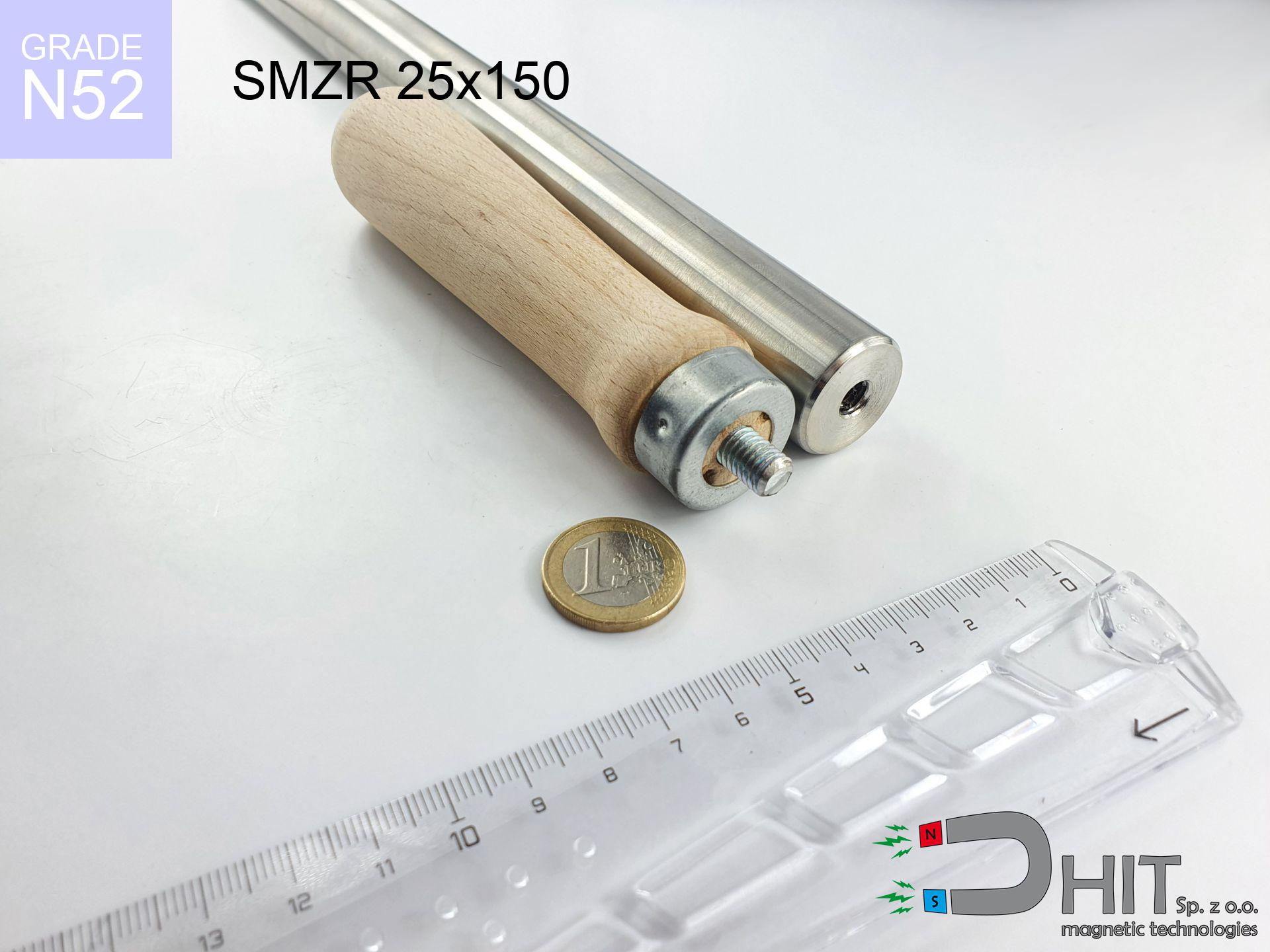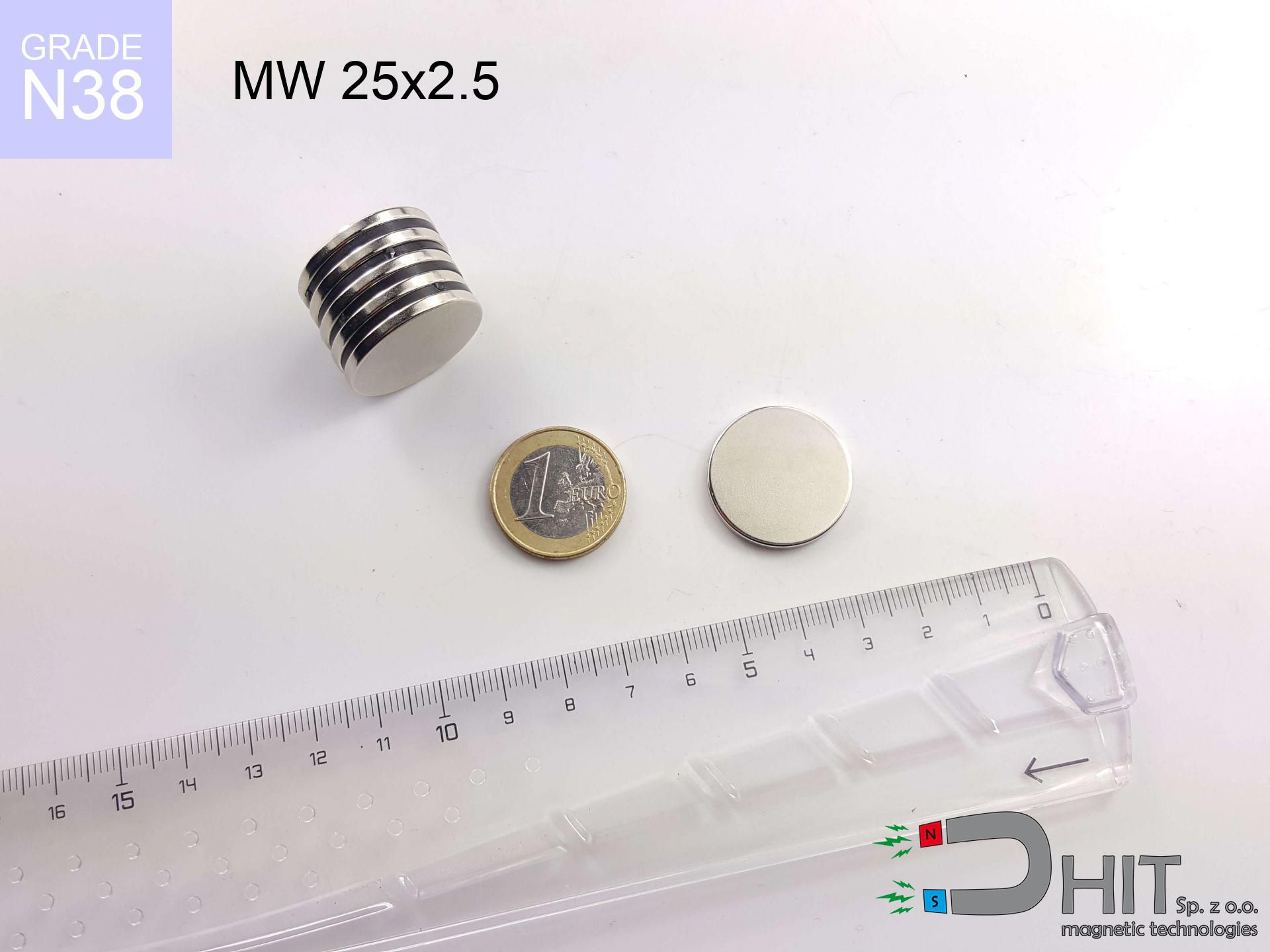SM 32x125 [2xM8] / N52 - magnetic separator
magnetic separator
Catalog no 130357
GTIN/EAN: 5906301813057
Diameter Ø
32 mm [±1 mm]
Height
125 mm [±1 mm]
Weight
690 g
Magnetic Flux
~ 10 000 Gauss [±5%]
455.10 ZŁ with VAT / pcs + price for transport
370.00 ZŁ net + 23% VAT / pcs
bulk discounts:
Need more?
Pick up the phone and ask
+48 888 99 98 98
alternatively contact us via
inquiry form
the contact form page.
Force as well as structure of magnetic components can be estimated on our
force calculator.
Orders submitted before 14:00 will be dispatched today!
Technical data of the product - SM 32x125 [2xM8] / N52 - magnetic separator
Specification / characteristics - SM 32x125 [2xM8] / N52 - magnetic separator
| properties | values |
|---|---|
| Cat. no. | 130357 |
| GTIN/EAN | 5906301813057 |
| Production/Distribution | Dhit sp. z o.o. |
| Country of origin | Poland / China / Germany |
| Customs code | 85059029 |
| Diameter Ø | 32 mm [±1 mm] |
| Height | 125 mm [±1 mm] |
| Weight | 690 g |
| Material Type | Stainless steel AISI 304 / A2 |
| Magnetic Flux | ~ 10 000 Gauss [±5%] |
| Size/Mount Quantity | 2xM8 |
| Polarity | circumferential - 4 poles |
| Casing Tube Thickness | 1 mm |
| Manufacturing Tolerance | ±1 mm |
Magnetic properties of material N52
| properties | values | units |
|---|---|---|
| remenance Br [min. - max.] ? | 14.2-14.7 | kGs |
| remenance Br [min. - max.] ? | 1420-1470 | mT |
| coercivity bHc ? | 10.8-12.5 | kOe |
| coercivity bHc ? | 860-995 | kA/m |
| actual internal force iHc | ≥ 12 | kOe |
| actual internal force iHc | ≥ 955 | kA/m |
| energy density [min. - max.] ? | 48-53 | BH max MGOe |
| energy density [min. - max.] ? | 380-422 | BH max KJ/m |
| max. temperature ? | ≤ 80 | °C |
Physical properties of sintered neodymium magnets Nd2Fe14B at 20°C
| properties | values | units |
|---|---|---|
| Vickers hardness | ≥550 | Hv |
| Density | ≥7.4 | g/cm3 |
| Curie Temperature TC | 312 - 380 | °C |
| Curie Temperature TF | 593 - 716 | °F |
| Specific resistance | 150 | μΩ⋅cm |
| Bending strength | 250 | MPa |
| Compressive strength | 1000~1100 | MPa |
| Thermal expansion parallel (∥) to orientation (M) | (3-4) x 10-6 | °C-1 |
| Thermal expansion perpendicular (⊥) to orientation (M) | -(1-3) x 10-6 | °C-1 |
| Young's modulus | 1.7 x 104 | kg/mm² |
Table 1: Rod construction
SM 32x125 [2xM8] / N52
| Parameter | Value | Description / Unit |
|---|---|---|
| Diameter (Ø) | 32 | mm |
| Total length | 125 | mm (L) |
| Active length | 89 | mm |
| Section count | 3 | modules |
| Dead zone | 36 | mm (2x 18mm starter) |
| Weight (est.) | ~764 | g |
| Active area | 89 | cm² (Area) |
| Housing material | AISI 304 | 1.4301 (Inox) |
| Surface finish | Ra < 0.8 µm | Polished |
| Temp. class | 80°C | Standard (N) |
| Force loss (at max °C) | -12.8% | Reversible loss (physics) |
| Force (calculated) | 41 | kg (theor.) |
| Induction (surface) | ~10 000 | Gauss (Max) |
Chart 2: Field profile (3 sections)
Chart 3: Temperature performance
Elemental analysis
| iron (Fe) | 64% – 68% |
| neodymium (Nd) | 29% – 32% |
| boron (B) | 1.1% – 1.2% |
| dysprosium (Dy) | 0.5% – 2.0% |
| coating (Ni-Cu-Ni) | < 0.05% |
Environmental data
| recyclability (EoL) | 100% |
| recycled raw materials | ~10% (pre-cons) |
| carbon footprint | low / zredukowany |
| waste code (EWC) | 16 02 16 |
See more products
Strengths as well as weaknesses of neodymium magnets.
Advantages
- Their magnetic field is durable, and after around ten years it drops only by ~1% (theoretically),
- They are extremely resistant to demagnetization induced by external disturbances,
- A magnet with a smooth gold surface has an effective appearance,
- Magnets possess very high magnetic induction on the working surface,
- Made from properly selected components, these magnets show impressive resistance to high heat, enabling them to function (depending on their form) at temperatures up to 230°C and above...
- Possibility of detailed forming as well as modifying to concrete needs,
- Significant place in future technologies – they are utilized in magnetic memories, motor assemblies, medical equipment, and modern systems.
- Relatively small size with high pulling force – neodymium magnets offer strong magnetic field in tiny dimensions, which enables their usage in compact constructions
Cons
- To avoid cracks upon strong impacts, we recommend using special steel holders. Such a solution secures the magnet and simultaneously improves its durability.
- When exposed to high temperature, neodymium magnets suffer a drop in force. Often, when the temperature exceeds 80°C, their strength decreases (depending on the size, as well as shape of the magnet). For those who need magnets for extreme conditions, we offer [AH] versions withstanding up to 230°C
- Magnets exposed to a humid environment can corrode. Therefore during using outdoors, we recommend using waterproof magnets made of rubber, plastic or other material protecting against moisture
- We recommend casing - magnetic mechanism, due to difficulties in creating nuts inside the magnet and complex shapes.
- Health risk resulting from small fragments of magnets are risky, when accidentally swallowed, which gains importance in the aspect of protecting the youngest. It is also worth noting that tiny parts of these magnets can complicate diagnosis medical when they are in the body.
- High unit price – neodymium magnets have a higher price than other types of magnets (e.g. ferrite), which increases costs of application in large quantities
Lifting parameters
Breakaway strength of the magnet in ideal conditions – what contributes to it?
- using a sheet made of low-carbon steel, functioning as a magnetic yoke
- with a cross-section no less than 10 mm
- with a plane cleaned and smooth
- without any air gap between the magnet and steel
- for force acting at a right angle (pull-off, not shear)
- at room temperature
Practical aspects of lifting capacity – factors
- Distance – existence of any layer (paint, tape, gap) interrupts the magnetic circuit, which reduces capacity rapidly (even by 50% at 0.5 mm).
- Force direction – declared lifting capacity refers to pulling vertically. When slipping, the magnet exhibits much less (typically approx. 20-30% of nominal force).
- Metal thickness – the thinner the sheet, the weaker the hold. Magnetic flux penetrates through instead of generating force.
- Material type – the best choice is pure iron steel. Cast iron may have worse magnetic properties.
- Surface finish – full contact is obtained only on smooth steel. Rough texture create air cushions, reducing force.
- Temperature – heating the magnet causes a temporary drop of induction. It is worth remembering the thermal limit for a given model.
Lifting capacity testing was conducted on plates with a smooth surface of optimal thickness, under a perpendicular pulling force, however under parallel forces the holding force is lower. In addition, even a slight gap between the magnet and the plate decreases the holding force.
H&S for magnets
Machining danger
Mechanical processing of neodymium magnets poses a fire hazard. Magnetic powder reacts violently with oxygen and is hard to extinguish.
Respect the power
Handle magnets with awareness. Their huge power can shock even experienced users. Be vigilant and do not underestimate their force.
Keep away from computers
Avoid bringing magnets near a purse, computer, or TV. The magnetism can permanently damage these devices and wipe information from cards.
Pacemakers
People with a pacemaker have to keep an absolute distance from magnets. The magnetic field can stop the functioning of the implant.
Shattering risk
Protect your eyes. Magnets can explode upon uncontrolled impact, ejecting shards into the air. Wear goggles.
Choking Hazard
NdFeB magnets are not toys. Accidental ingestion of several magnets can lead to them attracting across intestines, which constitutes a severe health hazard and necessitates urgent medical intervention.
Serious injuries
Danger of trauma: The pulling power is so great that it can cause hematomas, crushing, and broken bones. Use thick gloves.
Warning for allergy sufferers
A percentage of the population experience a hypersensitivity to nickel, which is the standard coating for NdFeB magnets. Frequent touching can result in an allergic reaction. We recommend wear safety gloves.
Heat sensitivity
Standard neodymium magnets (N-type) undergo demagnetization when the temperature surpasses 80°C. This process is irreversible.
GPS Danger
Navigation devices and smartphones are highly sensitive to magnetic fields. Close proximity with a strong magnet can ruin the internal compass in your phone.

![Separation magnetic rod SM 32x125 [2xM8] / N52 Separation magnetic rod SM 32x125 [2xM8] / N52](https://cdn3.dhit.pl/graphics/banners/magnet.webp)
![SM 32x125 [2xM8] / N52 - magnetic separator](https://cdn3.dhit.pl/graphics/products/sm-32x125-2xm8-moj.jpg)
![UMGZ 75x34x18 [M10] GZ / N38 - magnetic holder external thread UMGZ 75x34x18 [M10] GZ / N38 - magnetic holder external thread](https://cdn3.dhit.pl/graphics/products/umgw-75x34x18-m10-gz-xid.jpg)
![SM 25x250 [2xM8] / N52 - magnetic separator SM 25x250 [2xM8] / N52 - magnetic separator](https://cdn3.dhit.pl/graphics/products/sm-25x250-2xm8-sam.jpg)



